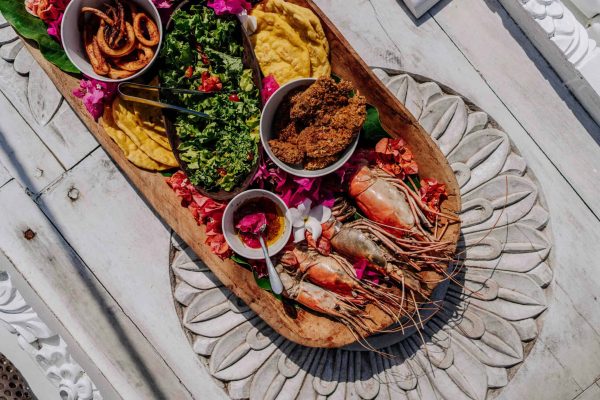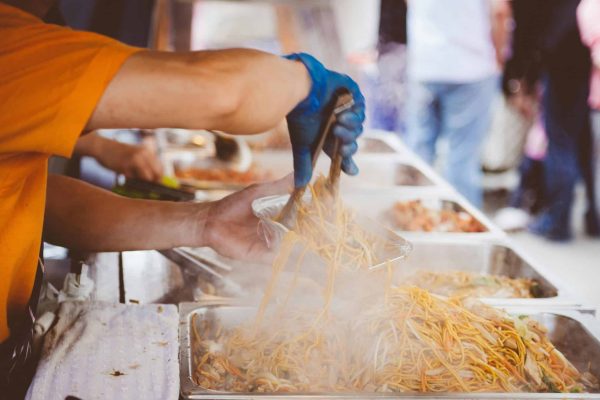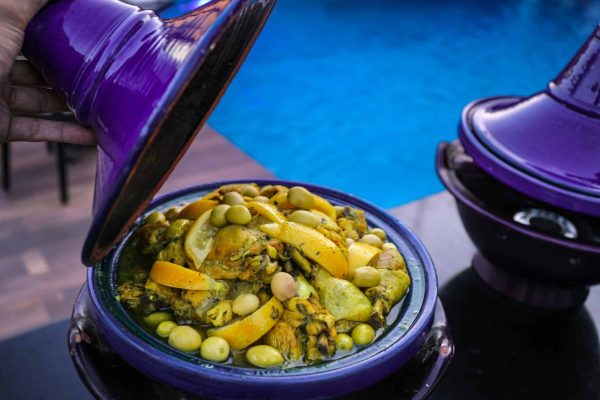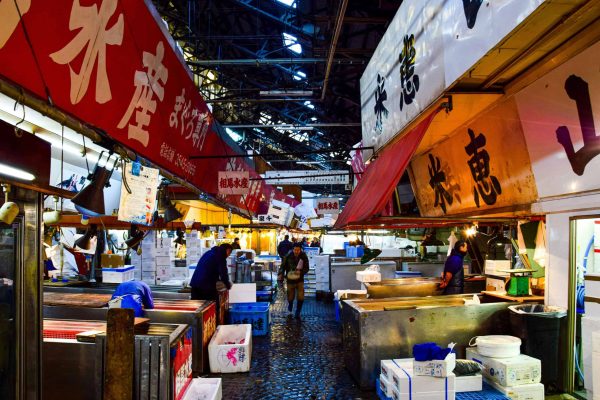
Travel is more than just a change of scenery — it’s a shift in perspective. The most meaningful journeys often involve engaging with a destination’s culture, and one of the most authentic ways to do that is through food and drink.
From farm-to-table dishes to street-side snacks and vineyard samplings, local flavors are a direct path to a region’s history, climate, traditions, and personality. Culinary exploration adds depth to every trip, creating memories that linger long after the suitcase is unpacked.
Whether you’re sipping wine in Tuscany or sharing noodles in Tokyo, taste becomes the language of connection. Here are five pro travel tips for tasting local flavors!
This site is part of an affiliate sales network and receives compensation for sending traffic to partner sites. This compensation may impact how and where links appear on this site. This site does not include all financial companies or all available financial offers. See below for full disclosures.
Want to earn free travel? Learn more about one of my favorite credit cards to get started!
Savoring The World’s Vineyards: The Allure Of Wine Tourism
Wine tourism is a sensory-driven passport into the soul of a region, where every glass tells a story rooted in soil, sun, and centuries of craft.
Wine tourism goes far beyond tasting rooms — it’s an immersive experience that connects travelers to the geography, economy, and artistry of winemaking regions. From the iconic valleys of Napa or Tuscany to the biodynamic estates of Mendoza, wine-producing areas offer layered encounters with local agriculture, architecture, and cuisine.
Guided tours often include cellar access, vineyard walks, food pairings, and conversations with vintners, revealing the culture behind the cork. It’s a wine-lover’s dream and the perfect way to enjoy local flavors!

Photo by Engjell Gjepali on Unsplash
For example, France’s Burgundy isn’t just known for its Pinot Noir and Chardonnay but for how the classification system reflects medieval land-use traditions. Similarly, South Africa’s Stellenbosch marries breathtaking mountain terrain with bold varietals and a strong local food movement.
Wine tourism encourages slow travel — it invites guests to linger, to observe the harvest cycle, and to build a personal connection with the land.
Local Street Food: Where Culture Meets The Curb
To truly understand a city’s heartbeat, follow the aroma of its street food! It’s where local life unfolds in edible form and you can try an abundance of local flavors.
Street food captures the essence of local culture in its purest, most immediate form. Found on bustling corners, night markets, and roadside stalls, these portable meals are typically rooted in tradition, reflecting generational techniques, spice preferences, and regional ingredients. From tacos in Oaxaca to satay in Jakarta or banh mi in Hanoi, every bite tells a story about migration, adaptation, and pride.

These small, flavorful dishes often emerge from communities where formal restaurants may be inaccessible, meaning the recipes have remained closer to home cooking than haute cuisine. They’re shaped by climate (grilled meats in warm places, deep-fried snacks where oil is a preservative), availability (coastal cities favoring seafood), and sociability (many dishes are made to share or eat on the go).
Local street food often introduces visitors to cooking methods that reflect the local energy — woks blazing, dough slapping, spices being hand-ground. These are performances, not just meals.
Eating with locals while standing or sitting on plastic stools dissolves tourist barriers and invites unfiltered cultural exchange. It’s cheap, it’s honest, and for many, it becomes the highlight of the entire trip.
Regional Specialties: A Deeper Connection Through Local Dishes
Eating regional specialties isn’t just about tasting local flavors — it’s a direct encounter with a community’s heritage, shaped by history, hardship, and climate.
Every region on Earth has a signature dish or culinary tradition shaped by centuries of adaptation to its environment and resources. Whether it’s gumbo in Louisiana, made with French, African, and Choctaw influences, or tagine in Morocco, slow-cooked to conserve energy and enrich spices, these dishes reflect the intersection of necessity and creativity. When travelers seek these local staples, they’re honoring stories of resilience and identity.

Sampling a cassoulet in the south of France, for instance, reveals not just a rich stew but a response to agrarian life and winter scarcity. Eating a mole poblano in Puebla is a culinary gateway into colonial trade, indigenous techniques, and celebratory rituals. These dishes act as edible archives, preserved and passed down across generations.
Many travelers seek “authentic” experiences, and food remains one of the few things that can’t be entirely replicated elsewhere. Restaurants abroad may imitate dishes, but the terroir, language, and setting are what complete the experience. Dining where the recipe was born adds emotional texture and transforms a meal into a cultural exchange. In short, food is memory made edible.
Markets And Food Halls: The Pulse Of A Destination
Markets are more than shopping venues — they’re living museums of local life where taste, trade, and tradition collide.
Local markets provide a vibrant introduction to how people eat, cook, and socialize. From the labyrinthine spice stalls of Istanbul’s Grand Bazaar to the open-air fish auctions in Tokyo’s Toyosu Market, these spaces offer more than ingredients — they offer access. Visitors not only see what locals buy but observe how they bargain, what’s seasonal, and how deeply food is embedded in daily ritual.

Food halls, whether modernized like Mercado de San Miguel in Madrid or still rugged like Mercato Centrale in Florence, create opportunities for travelers to try multiple dishes in one sitting, often while seated beside residents grabbing lunch. These encounters create an unvarnished view into the local culinary identity.
Markets are also where you’ll find unusual fruits, heirloom vegetables, and heritage grains — ingredients that rarely travel far beyond their origin. They preserve biodiversity and flavor traditions that industrial food systems often forget.
Walking through one gives travelers the vocabulary of a region’s cuisine — chili types, cheese ages, pickling methods — arming them with context and curiosity. It’s food anthropology in real time!
Your FREE Carry-On Bag Travel Guide
Pack smarter and more efficiently with this FREE carry-on bag travel guide. Learn how to pack essentials, keep electronics safe, and more on your next travel adventure!
Cooking Classes And Culinary Workshops: Participating In Local Food Culture
Cooking local dishes with local people turns a passive meal into an active cultural exchange. Food becomes far more meaningful when travelers not only consume it but participate in creating it.
Culinary workshops, often hosted in private homes or small kitchens, immerse guests in the flavors, tools, and rhythms of the region. Making pasta in Tuscany, rolling sushi in Tokyo, or grinding curry paste in Chiang Mai offers tactile, flavorful insights into tradition and technique.

Photo by Peter Borter on Unsplash
More importantly, these experiences introduce travelers to values such as precision, improvisation, patience, and celebration. Learning how to wrap tamales or fold dumplings isn’t just technical — it reflects communal rituals, holiday customs, or matrilineal knowledge passed down through generations. These workshops humanize food by restoring its backstory.
Participation like this also has a lasting effect. Visitors return home with recipes, yes, but also with a newfound appreciation for a culture’s ingenuity and labor. Cooking a dish they learned abroad allows them to revisit that place, emotionally and gastronomically. And often, these memories linger longer than any landmark or souvenir.
Enjoy tasting local flavors and experience the authenticity of every destination!
Local flavors are often the gateway to unexpected friendships, spontaneous invitations, and behind-the-scenes glimpses that guidebooks can’t offer. In many cultures, offering food is a gesture of trust and inclusion — so, accepting it is more than politeness; it’s a step into belonging.
You can find many local food tours and experiences on booking sites like Viator. Look at reviews to make sure they’re truly local and not just going to the regular touristy spots.
Ultimately, tasting your way through a destination opens not just your palate, but your place within the global human story. Don’t forget to book a food tour or local experience on your next trip!
Want to read this post later? Save it on Pinterest!
Looking for more travel tips and ideas? Check out my favorite travel products and some of my other posts below!
User-Generated Content (UGC) Disclosure: The responses below are not provided or commissioned by the bank advertiser. Responses have not been reviewed, approved, or otherwise endorsed by the bank advertiser. It is not the bank advertiser’s responsibility to ensure all posts and/or questions are answered.
Disclaimer: Some of the links on this page are affiliate links, which means that, at no extra cost to you, The Abundant Traveler may earn a small commission. Using these links is a huge way to support me, and these will help keep the blog running and free for everyone to enjoy.
All my reviews and opinions are based on my own experience, which may not be the same for everyone. If you choose to use them, then thank you for your support.
Advertiser Disclosure: The Abundant Traveler is part of an affiliate sales network and receives compensation for sending traffic to partner sites, such as MileValue.com. This compensation may impact how and where links appear on this site. This site does not include all financial companies or all available financial offers. Terms apply to American Express benefits and offers. Enrollment may be required for select American Express benefits and offers. Visit americanexpress.com to learn more.
The content on this page is accurate as of the posting date; however, some of the offers mentioned may have expired.
Editorial Disclaimer: Opinions expressed here are author’s alone, not those of any bank, credit card issuer, hotel, airline, or other entity. This content has not been reviewed, approved, or otherwise endorsed by any of the entities included within the post.






